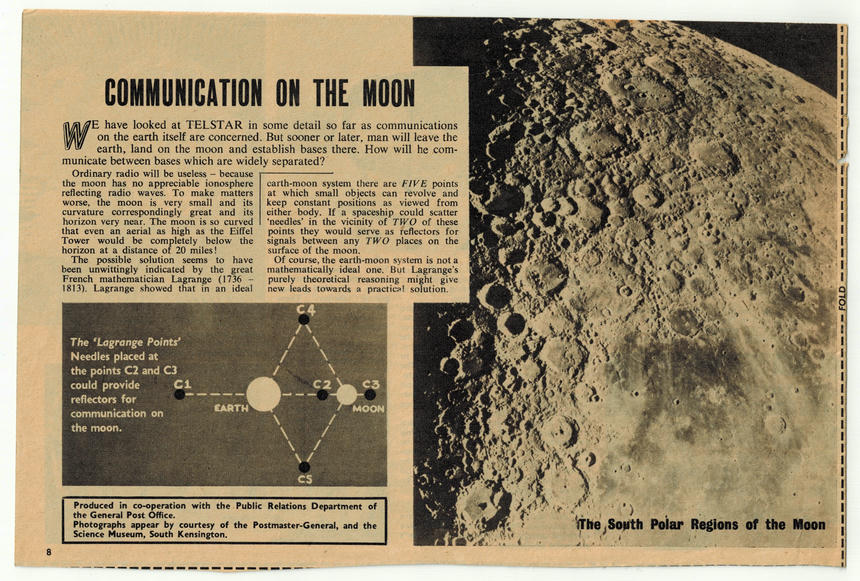Scrapbook 3: The Story of Telstar (8)

COMMUNICATION ON THE MOON
WE have looked at TELSTAR in some detail so far as communications on the earth itself are concerned. But sooner or later, man will leave the earth, land on the moon and establish bases there. How will he communicate between bases which are widely separated?
Ordinary radio will be useless — because the moon has no appreciable ionosphere reflecting radio waves. To make matters worse, the moon is very small and its curvature correspondingly great and its horizon very near. The moon is so curved that even an aerial as high as the Eiffel Tower would be completely below the horizon at a distance of 20 miles!
The possible solution seems to have been unwittingly indicated by the great French mathematician Lagrange (1736–1813). Lagrange showed that in an ideal earth-moon system there are FIVE points at which small objects can revolve and keep constant positions as viewed from either body. If a spaceship could scatter ‘needles’ in the vicinity of TWO of these points they would serve as reflectors for signals between any TWO places on the surface of the moon.
Of course, the earth-moon system is not a mathematically ideal one. But Lagrange’s purely theoretical reasoning might give new leads towards a practical solution.
The ‘Lagrange Points’ Needles placed at the points C2 and C3 could provide reflectors for communication on the moon.
Produced in co-operation with the Public Relations Department of the General Post Office.
Photographs appear by courtesy of the Postmaster-General, and the Science Museum, South Kensington.